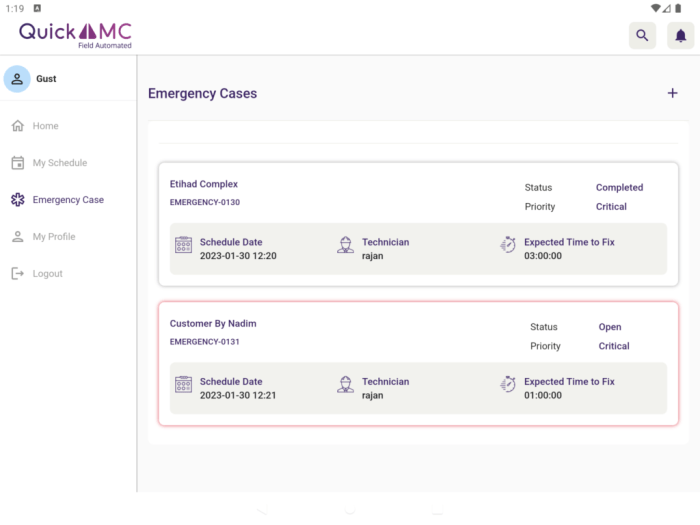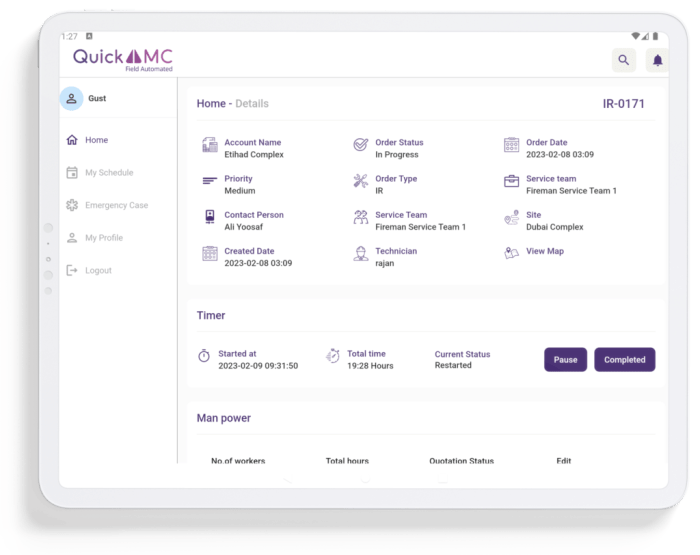Digital work order software is revolutionizing how businesses manage and execute tasks. It offers a centralized platform for tracking, assigning, and completing work orders, leading to significant efficiency gains and improved communication. This system eliminates the inefficiencies of paper-based processes, reducing errors and improving overall productivity.
From maintenance and repairs to project management, digital work order software provides a comprehensive solution. Its intuitive interface allows users to easily create, update, and track work orders, ensuring transparency and accountability throughout the entire process. This robust system is adaptable to various industries and company sizes, catering to unique needs and optimizing workflows.
In today’s fast-paced business environment, efficient management of work orders is crucial for maintaining productivity and profitability. Digital work order software provides a robust solution for streamlining processes, reducing errors, and boosting overall operational efficiency. This comprehensive guide explores the intricacies of digital work order software, its key features, benefits, and implementation strategies.
Understanding the Functionality of Digital Work Order Software
Digital work order software, also known as work order management software, is a centralized platform that digitizes the entire work order lifecycle. From initial request to final completion, every stage is tracked and documented within the system. This allows for improved communication, real-time updates, and a clear audit trail of all work performed.
Key Features of Digital Work Order Software
- Automated Work Order Creation: Software can automatically generate work orders based on predefined templates or triggers, eliminating manual data entry and reducing errors.
- Real-time Tracking and Updates: Allows all stakeholders to view the status of work orders in real-time, enabling better coordination and progress monitoring.
- Enhanced Communication: Facilitates seamless communication between technicians, supervisors, and clients through integrated messaging and notifications.
- Comprehensive Reporting and Analytics: Provides valuable insights into operational performance, allowing for informed decision-making and process optimization.
- Integration Capabilities: Integrates with other business systems, such as inventory management, accounting, and project management tools, to provide a holistic view of operations.
- Mobile Accessibility: Enables technicians to access and manage work orders from anywhere, anytime, using mobile devices.
Benefits of Implementing Digital Work Order Software
The adoption of digital work order software offers a multitude of advantages, including:
Improved Efficiency and Productivity
- Reduced manual data entry, freeing up staff for more strategic tasks.
- Streamlined workflows and improved communication.
- Real-time visibility into work order progress.
- Automated reminders and notifications, minimizing delays.
Enhanced Cost Savings
- Reduced labor costs associated with manual processes.
- Minimized material waste due to improved inventory management.
- Faster resolution of issues, leading to reduced downtime.
Increased Accuracy and Transparency
- Elimination of human errors in data entry.
- Comprehensive documentation and audit trails.
- Improved accountability and responsibility.
Choosing the Right Digital Work Order Software
Selecting the ideal software depends on factors like company size, industry, and specific needs. Consider factors such as scalability, integration capabilities, and user-friendliness. Research different providers and evaluate their offerings based on your requirements.
Factors to Consider, Digital work order software
- Scalability: The software should be able to adapt to your business’s growth.
- Budget: Consider the costs associated with implementation, training, and ongoing maintenance.
- Integration: Ensure compatibility with existing systems.
- User Interface: A user-friendly interface is essential for efficient use.
- Customer Support: Thorough support is vital for resolving issues.
Frequently Asked Questions (FAQ)
- Q: How much does digital work order software cost?
A: Pricing varies significantly based on features, functionalities, and vendor. Contact vendors for detailed pricing.
- Q: How long does it take to implement digital work order software?
A: Implementation timelines depend on factors such as system complexity and team familiarity with the platform.
- Q: Can I integrate digital work order software with other business applications?
A: Most modern digital work order software platforms offer integration capabilities with popular business applications.
- Q: What are the security measures in place for my work orders?
A: Reputable vendors prioritize data security and employ robust measures to protect sensitive information.
Note: This information is for general guidance only and does not constitute professional advice. Consult with IT specialists for tailored advice.
Conclusion
Digital work order software is a powerful tool for improving efficiency, reducing costs, and enhancing transparency in operations. By leveraging its features and benefits, businesses can optimize workflows, improve communication, and ultimately achieve greater success. Choosing the right solution and effectively implementing it is crucial for realizing its full potential.
References
- [Insert reputable website link 1, e.g., Gartner Report on Digital Work Order Software]
- [Insert reputable website link 2, e.g., Industry-specific best practices on Work Order Management]
Call to Action
Ready to transform your work order management? Explore the possibilities of digital work order software and schedule a consultation with our experts today. Contact us to discuss your specific needs and learn how our tailored solutions can boost your efficiency and profitability.
In conclusion, implementing digital work order software is a strategic move for businesses seeking to optimize operations, enhance communication, and boost overall efficiency. By digitizing work orders, companies gain a clearer view of their operations, leading to better resource allocation and reduced costs. This system promotes a culture of accountability and transparency, ultimately driving improved performance and productivity across the organization.

Source: quickamc.com
Common Queries
What are the different types of digital work order software available?

Source: quickamc.com
Various types of digital work order software exist, catering to different needs and industries. Some focus on maintenance and repair, while others are more general-purpose, adaptable to diverse workflows. Features like mobile access, custom reporting, and integration with other systems vary depending on the specific software.
How much does digital work order software typically cost?
Pricing for digital work order software varies significantly based on features, scalability, and the number of users. Software providers often offer tiered pricing plans, allowing businesses to choose a package that best fits their budget and needs. Free trials and demos are often available to assess the software before committing to a purchase.
Can digital work order software be integrated with other systems?
Many digital work order software solutions can be integrated with other business systems, such as accounting software, inventory management systems, or customer relationship management (CRM) platforms. This integration allows for a seamless flow of information and enhanced data analysis.